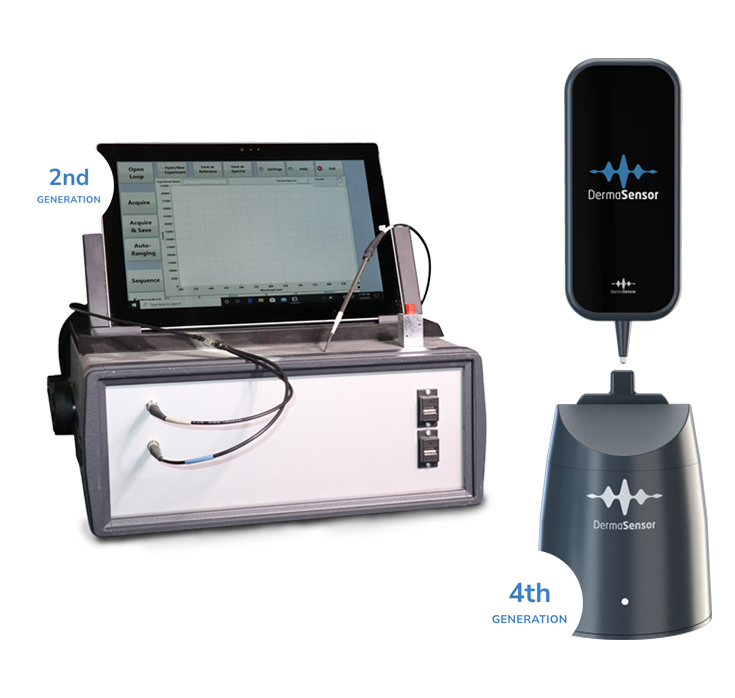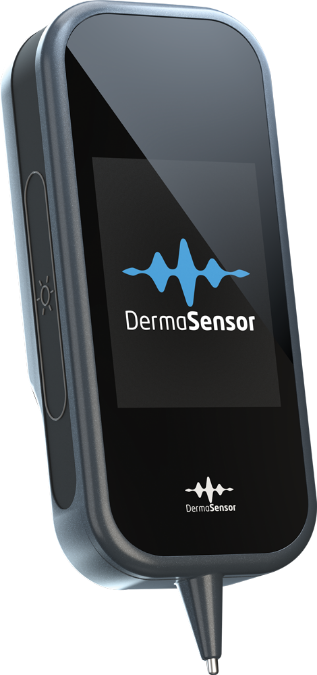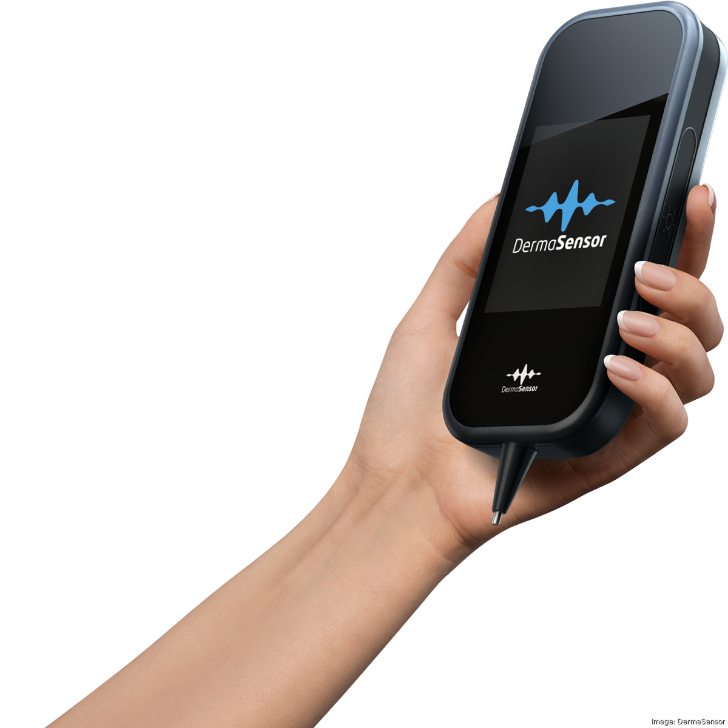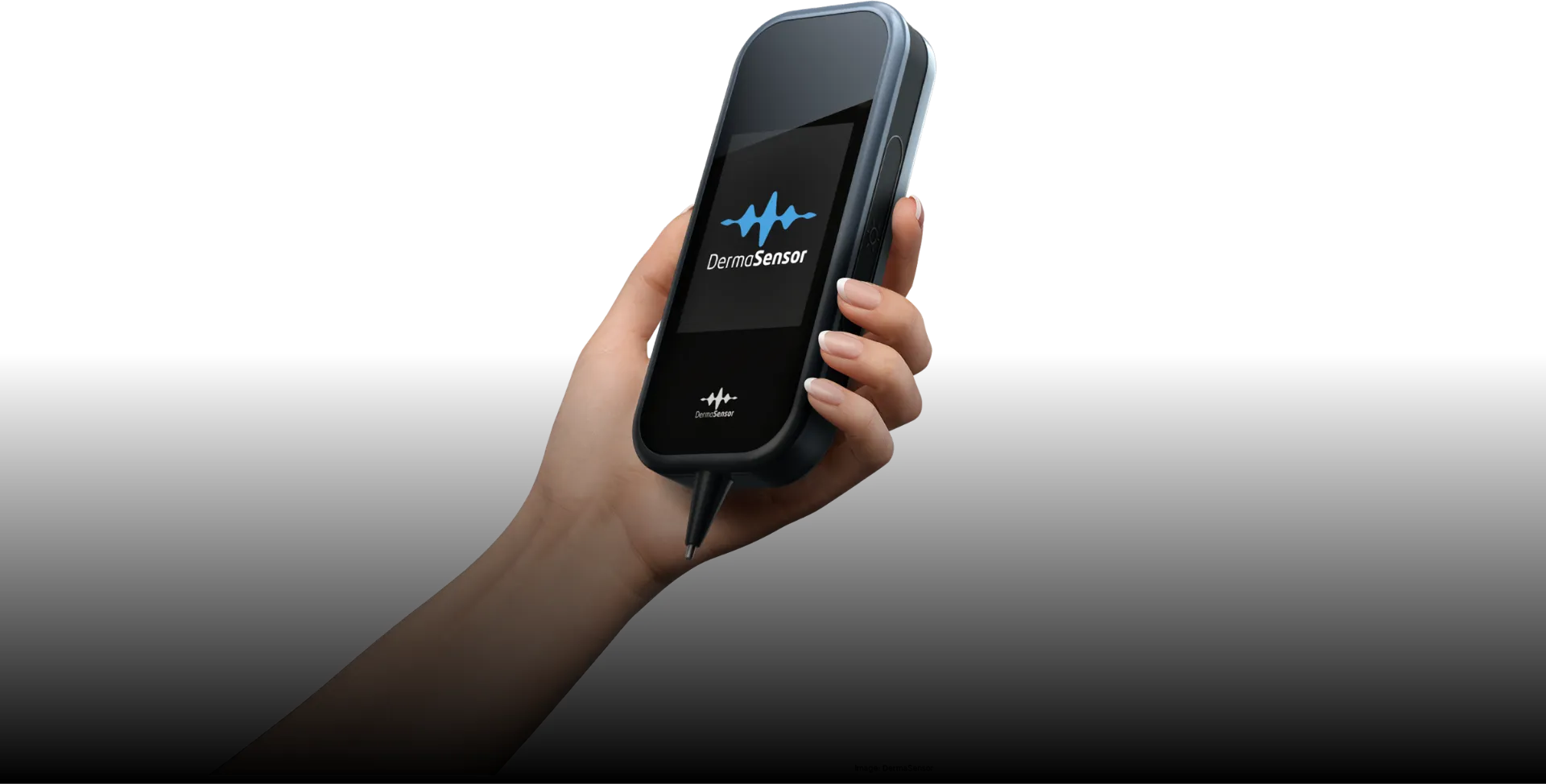Company History

As two leading entrepreneurs and investors in health technology companies, Dr. Maurice Ferre (Co-founder and Chairman) and Christopher Dewey (Co-founder) came to believe that skin cancer is primarily a public health issue that could be addressed by improving access to quality skin cancer care. Due to the limited number of dermatologists, their goal was to use cutting-edge spectroscopy and machine learning technologies to improve frontline providers ability to detect skin cancer early.
They founded DermaSensor in 2009 following discussions with Dr. Irving Bigio, Professor of Biomedical Engineering at Boston University and one of the top spectroscopy researchers in the world. Dr. Bigio is the original inventor and patent holder for Elastic Scattering Spectroscopy (ESS), a key technology employed by the DermaSensor device.
Since Professor Bigio’s invention of ESS in 1994, there have been several hundreds of publications on ESS and over 30 publications on the use of ESS in clinical studies. DermaSensor began its own skin-specific studies using this technology in 2011 and began its first study on the current commercial device in 2018.

Building a Groundbreaking Device
DermaSensor was founded in 2009 to improve patient access to effective skin cancer assessments. By harnessing the power of elastic scattering spectroscopy (ESS) we created the world’s first skin tissue sampling system that uses hundreds of different wavelengths of light to painlessly and non-invasively scan skin lesions. We use the light to detect properties consistent with malignancy at a cellular and subcellular level. It’s like an ultrasound, but using light instead of sound.
When it was first developed, ESS technology was the size of a microwave oven. Today, thanks to a decade of our team’s engineering advancement, you can hold it in the palm of your hand.
Harnessing the Power of AI
Even with cutting-edge ESS technology, there was no way to assess lesions objectively and efficiently. That’s why we developed an algorithm using machine learning. To build it, we collected thousands of dermatopathology-confirmed malignant and benign tissue samples. Then we compared the spectral data to the pathology report, testing and fine-tuning the algorithm in a process that continues today, as we constantly indentify and analyse new data, providing ongoing updates to our DermaSensor users.
Today, thanks to our proprietary DermaSensor algorithm, our device processes spectral data in a matter of seconds, rather than waiting days for a physician or labratory to return results.

1Manolakos D et al. Clinical Validation of a Handheld Elastic Scattering Spectroscopy Artificial Intelligence Device, Presentation at American Academy of Dermatologists Innovation Academy, July 20-24, 2022.
2Thames T et al. Clinical Utility of a Handheld Elastic Scattering Spectroscopy Tool and Machine Learning on the Diagnosis and Management of Skin Cancer. Poster Presentation, STFM Annual Spring Conference, April 30-May 4, 2022.
3Tepedino M et al. Use of Elastic Scattering Spectroscopy on Patient Selected Lesions that are Concerning for Skin Cancer. Poster Presentation, Innovations in Dermatology, Las Vegas NV, Nov 3-6, 2022.
4PPV for spectral score group 8-10.
5Hartman R et al. Clinical Validation of a Handheld Elastic Scattering Spectroscopic Device in the Evaluation of Lesions Suggestive of Melanoma, Presentation at the American Academy of Dermatologists Annual Meeting, Mar 24-28th, 2022.
6Sample size includes invasive melanoma, melanoma in situ, atypical junctional melanocytic proliferations and highly atypical melanocytic nevi.
7Merry SP et al. Clinical Performance of Novel Elastic Scattering Spectroscopy (ESS) in Detection of Skin Cancer: A Blinded, Prospective, Multi-Center Clinical Trial [Initial Results]. Poster Presentation, Innovations in Dermatology, Las Vegas NV, Nov 3-6, 2022

